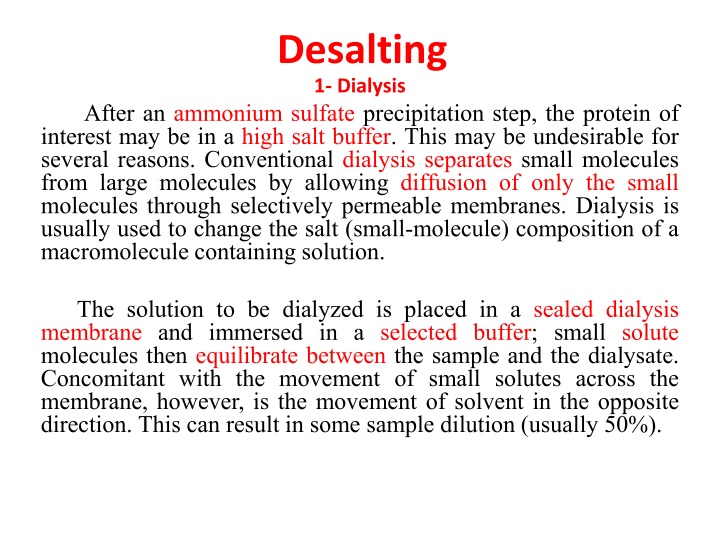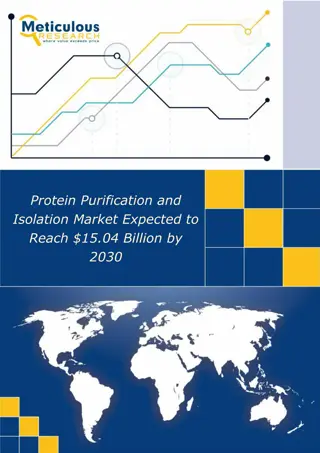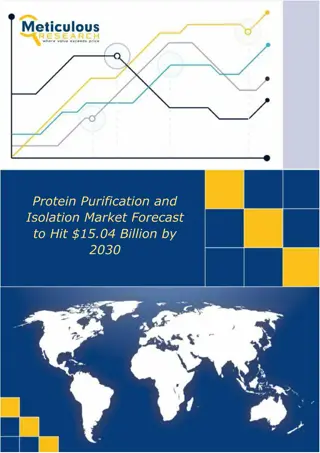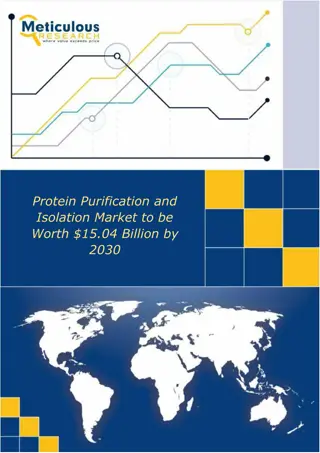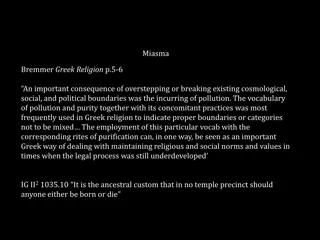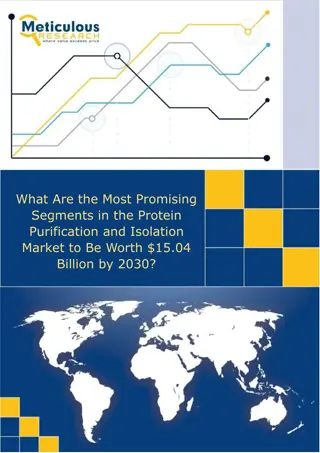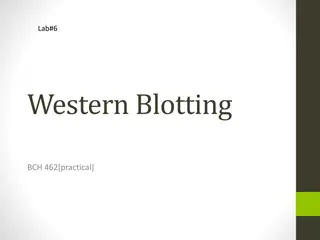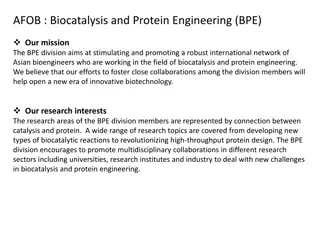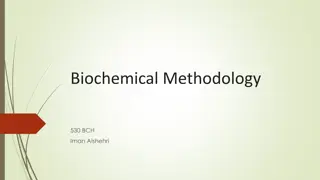Protein Desalting Techniques for Biochemical Purification
Protein desalting is crucial for purifying proteins after an ammonium sulfate precipitation step, which may leave the protein in a high-salt buffer. Three common desalting methods include dialysis using semi-permeable membranes, gel filtration with Sephadex G25 to exclude salts, and ultrafiltration to both remove salts and exchange buffers. Each technique offers a unique way to achieve desalting, ensuring the protein is free from high salt concentrations.
Download Presentation

Please find below an Image/Link to download the presentation.
The content on the website is provided AS IS for your information and personal use only. It may not be sold, licensed, or shared on other websites without obtaining consent from the author.If you encounter any issues during the download, it is possible that the publisher has removed the file from their server.
You are allowed to download the files provided on this website for personal or commercial use, subject to the condition that they are used lawfully. All files are the property of their respective owners.
The content on the website is provided AS IS for your information and personal use only. It may not be sold, licensed, or shared on other websites without obtaining consent from the author.
E N D
Presentation Transcript
Desalting 1- Dialysis After an ammonium sulfate precipitation step, the protein of interest may be in a high salt buffer. This may be undesirable for several reasons. Conventional dialysis separates small molecules from large molecules by allowing diffusion of only the small molecules through selectively permeable membranes. Dialysis is usually used to change the salt (small-molecule) composition of a macromolecule containing solution. The solution to be dialyzed is placed in a sealed dialysis membrane and immersed in a selected buffer; small solute molecules then equilibrate between the sample and the dialysate. Concomitant with the movement of small solutes across the membrane, however, is the movement of solvent in the opposite direction. This can result in some sample dilution (usually 50%).
The method of dialysis makes by using of semi- permeable membranes. In the simplest example, this membrane is manufactured in the form of tubing (looking much like a sausage casing).
2-Gel filtration Another way of removing the salts is by gel filtration, using e.g. Sephadex G25, which has small pores that will retard small molecules such as ammonium and sulphate ions, but will exclude large protein molecules, so that they are eluted in the void volume of the column. This means that the early eluate will contain the proteins, more or less free from ammonium sulphate.
3- Ultrafiltration way to both Another removing the salt and exchange the buffer, which completely avoids precipitation is called ultrafiltration. Ultrafiltration is done by a device which can withstand high pressure. First the ultrafiltration device is fitted with an ultrafilter membrane of desired molecular wt cut off such that your protein of interest will be retaining in the cell. Next, the pressure cell is filled with the protein solution and nitrogen gas at about 50 psi is applied while the cell is stirred gently at 4 C.After about 1 hr. the solution will be decreased in volume usually without loss of activity. To exchange the buffer the cell is filled with the desired buffer and the concentration process is repeated. concentrate a protein,
